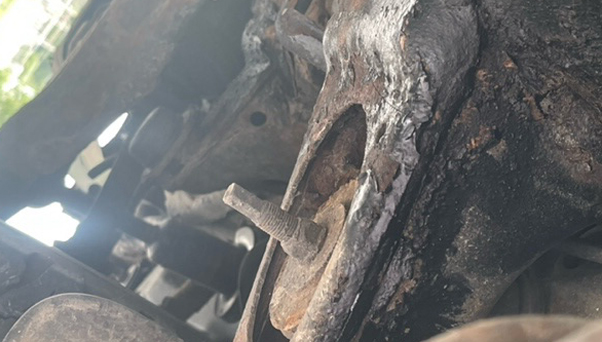
There are currently over 500,000 owners of Toyota 4Runners throughout the country, and Florida ranks third when it comes to the largest number of drivers, after California and Texas. Although 4Runners are popular for their trustworthiness, it has recently come to light that the fourth generation may have a serious manufacturing defect.
More precisely, the undercarriages of Toyota 4Runners released between 2003 and 2009 have allegedly been inadequately treated against rust corrosion. Apparently, the manufacturer of frames, Dana Holding Corporation, has not properly treated the frames against rust.
The context in which the problem of premature frame rust corrosion that seems to affect Toyota 4Runners emerged is the lawsuit filed by Gary Weinreich on December 6, 2018, in South Carolina. After suffering a car accident in which the front steering control arm of his 2005 4Runner broke off, Weinreich decided to initially file a defect petition with the National Highway Traffic Safety Administration. This obscure but very effective type of complaint determined the agency to open a complex investigation.
Toyota Motor Corporation Was Faced with a Similar Lawsuit in 2016
A previous class-action lawsuit was filed against Toyota on October 3, 2016, by Ryan Burns in Arkansas. While the alleged problem was also the premature rusting of the frame, this time, the vehicles that were targeted were Tacomas, Sequoias, and Tundras manufactured between 2005 and 2009. In 2020, Toyota Motor Corporation agreed to settle the lawsuit for $3.4 billion, but the company refused to own up to any wrongdoing.
It seems that Toyota Motor Corporation will handle the ongoing lawsuit with the same innocent attitude, as the only public comment in this respect was made by spokesperson Eric Booth, saying that, “The safety of our customers is a top priority. While we cannot comment on these specific claims at this time, we will respond in the appropriate forum.” Moreover, the company tried to have the lawsuit canceled, as, in 2019, it requested a motion of dismissal.
What Owners of Toyota 4Runners from the Fourth Generation Should Do to Avoid a Terrible Car Accident
If you have a Toyota 4Runner that was manufactured between 2003 and 2009, you should keep a close eye on the frame. Usually, adequately treated vehicle frames begin showing a little rust within 10 to 15 years, whereas the frames of 4Runners from the fourth generation may become excessively rusted within only 5 years. Taking your vehicle to a licensed auto mechanic regularly for inspections with a focus on the frame is essential to prevent a car accident.
Since the frame is the main supporting structure of your automobile, if it is damaged by rust, it will fail to shield you during a car accident, which may prove deadly. Extreme rust corrosion of the frame may also cause alignment issues, uneven tire wear, suspension wear, and uneven shock, all of which can result in you losing control of your car while driving.
There are countless car accidents you can go through with a rusted frame, such as:
- head-on collisions
- side collisions
- vehicle rollovers
- rear-end collisions
- intersection accidents
Finally, if you are informed that the frame of your 4Runner needs to be replaced, you should not pay for this service yourself, as it is not your fault that the company manufactured seemingly defective vehicles. Instead, what you can do is file a claim with the help of a lawyer with Toyota, which will prompt the company to replace your frame free of charge.

About Bio: In charge of the management of firm assets, case evaluation, and financial analysis, Jonathan Sharp has been the Chief Financial Officer and the Director of Claims at Environment Litigation Group, P.C. for over 20 years. The primary areas of practice of the law firm are product liability and personal injury. Jonathan Sharp is also responsible for the collection and proper distribution of all the funds. He is dedicated to assisting wronged people and communities in recovering compensation from the liable parties.












